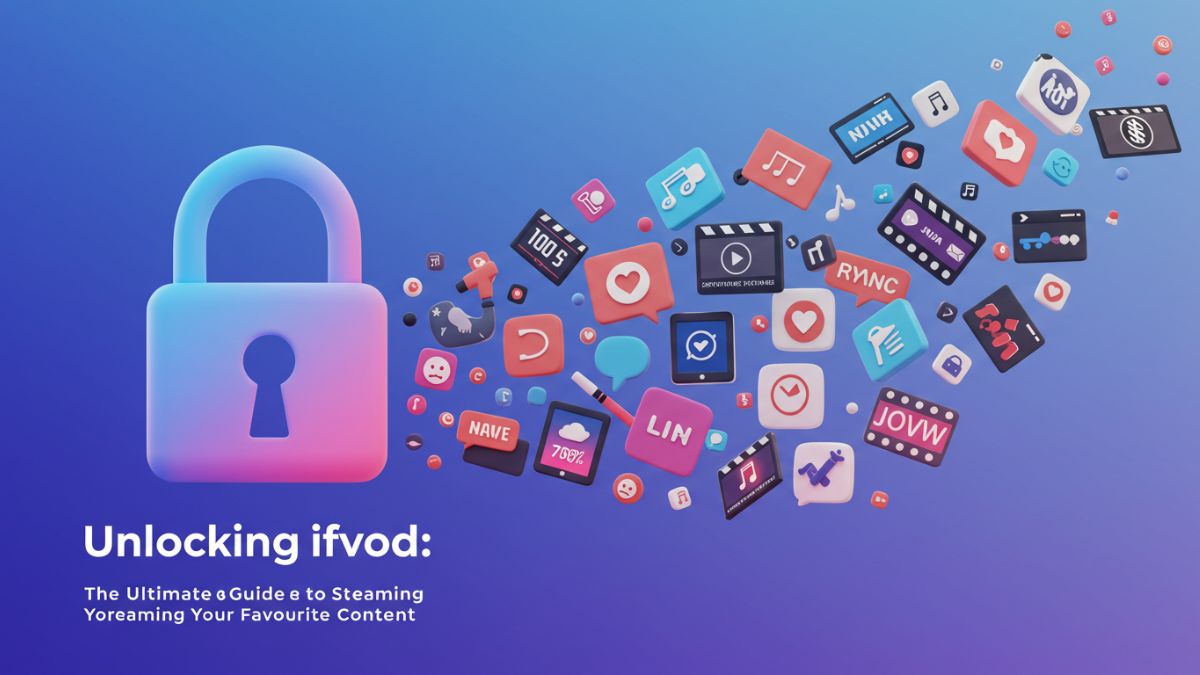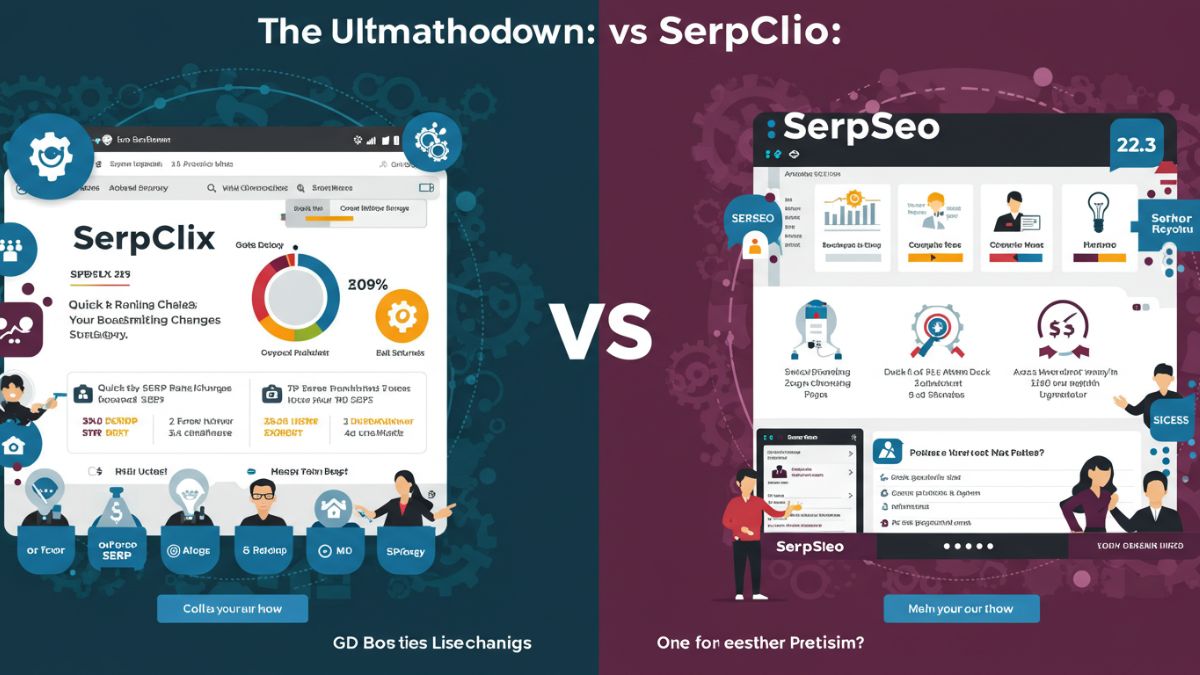TECHNOLOGY
Building a Resilient Cybersecurity Strategy for Modern Businesses

The Importance of Cybersecurity in Today’s Digital Age
In a world where businesses increasingly rely on digital platforms and data, the importance of cybersecurity cannot be overstated. Cyber attacks can result in tremendous financial losses, damage to reputation, and legal repercussions. Utilizing a unified cybersecurity platform helps mitigate these risks by providing a comprehensive approach to security. This approach ensures that all areas of the business’s digital environment are protected under a single, cohesive strategy. The rise in the number of devices connected to the Internet and the amount of data generated by businesses means that the attack surface has significantly increased. Therefore, cybersecurity strategies must address not just external threats but also internal vulnerabilities. By integrating advanced security technologies and practices, businesses can create a more resilient security posture that can withstand various types of cyber threats. Proactively identifying and mitigating potential threats can save businesses from substantial financial and reputational damage.
Critical Components of an Effective Cybersecurity Strategy
A successful cybersecurity plan includes identifying threats, evaluating risks, and responding to incidents. Creating a multi-layered strategy is crucial, as it must address different security areas, such as network, data protection, and application security. This includes implementing security measures like firewalls, intrusion detection systems (IDS), and encryption. Additionally, it is essential to consistently monitor and detect threats in real time to identify and resolve potential security breaches quickly. Another crucial component is the integration of security policies and procedures governing data handling and protection within the organization. Periodic revision and modification of these policies must align with emerging risks and updated regulations. Having incident response plans in place is crucial, as they detail the actions to be carried out in case of a security breach, guaranteeing a prompt and efficient reaction. Employing a comprehensive method that integrates technology, processes, and individuals can significantly improve the efficacy of the cybersecurity plan.
Identifying and Assessing Digital Risks
Identifying and assessing risks is critical in building a robust cybersecurity strategy. This involves understanding the unique vulnerabilities within your digital environment and evaluating potential threats. Regularly updating risk assessments ensures that your strategy remains effective against evolving threats. Conducting thorough risk assessments helps pinpoint areas that require immediate attention, such as outdated software, weak passwords, or unpatched systems. Working with cybersecurity professionals can give you essential insights into the unique dangers associated with your sector and business typefaces. Vulnerability and penetration testing should complement risk assessments to identify potential weaknesses cybercriminals could exploit. By prioritizing identified risks based on their potential impact and likelihood, businesses can allocate resources more effectively, focusing on mitigating the most critical threats. This ongoing risk management process is essential for maintaining a solid security posture.
Best Practices for Risk Mitigation
Businesses must conduct regular security audits to find weaknesses and stop cyberattacks. Multi-factor authentication, or MFA, is an essential security feature that makes it more difficult for hackers to access sensitive data by requiring many verification forms before granting access to user accounts. Another essential procedure is encryption, which guarantees that data is safe even if it gets into the wrong hands. End-to-end encryption stops unwanted access to sensitive data, such as bank records and customer information. Software and system updates are essential for defending against known vulnerabilities that hackers can exploit. Businesses may respond to security breaches quickly and efficiently with the help of an incident response strategy, which helps to minimize damage and expedite recovery.
The Role of Employee Awareness and Training
Workers are an essential factor in upholding your company’s cybersecurity stance. Frequent training can assist employees in identifying phishing attempts and other cyber threats, decreasing the chances of human error. Providing employees with information and resources is crucial for every cybersecurity plan. Ensuring all employees, from new hires to senior management, understand their responsibilities in maintaining security measures is crucial. Fostering a security-conscious culture in the organization can result in increased vigilance and faster identification of possible threats. Training programs must be thorough and encompass different elements of cybersecurity, such as managing passwords, recognizing suspicious emails, and practicing safe internet browsing. Periodic training updates and fake phishing exercises can strengthen education and maintain employee participation. Moreover, establishing clear instructions and protocols for reporting suspicious behavior motivates employees to protect the organization’s digital space actively. By promoting employee security awareness, companies can significantly lessen the chances of successful cyber attacks.
Maintaining and Updating Your Cybersecurity Strategy
Cybersecurity strategies need to adapt and change as cyber threats continue to develop. Assessing and enhancing your security protocols and technologies is crucial to prevent new risks. Staying updated on industry trends and developments can assist in fine-tuning your strategy. Taking a proactive rather than reactive approach will help ensure your business stays resilient against cyber-attacks. Investing in ongoing enhancements and staying updated on new risks and advancements is essential to uphold a robust cybersecurity plan. Engaging in cybersecurity communities and joining industry conferences can offer valuable information on current threat landscapes and effective practices. Working with other companies and exchanging information on effective security practices can strengthen your organization’s protection. Consistently testing and revising your incident response plan guarantees it can effectively handle evolving cyber threats. Businesses can develop a strong security stance by viewing cybersecurity as a continuous process rather than a one-time task to protect against changing cyber threats.
Future Trends in Cybersecurity
Significant changes in the cybersecurity environment are anticipated in the upcoming years. Artificial intelligence and machine learning will be crucial in detecting and preventing threats as new technologies develop. These technologies can instantly examine large quantities of data to detect patterns and irregularities that could signal a security breach. Keeping current with upcoming trends can help your business stay strong against cyber threats. By incorporating cutting-edge technologies and consistently enhancing your cybersecurity strategies, you can protect your company from upcoming obstacles. Blockchain technology is a growing trend that offers improved cybersecurity through secure and transparent data transaction and storage methods.
Furthermore, the Internet of Things (IoT) growth brings about fresh security obstacles due to the expanding attack surface caused by a rising number of connected devices. These challenges entail creative strategies and partnerships among corporations, technology suppliers, and regulatory agencies. By remaining updated on these trends and integrating them into your cybersecurity plan, you can enhance your organization’s protection and manage the changing digital environment more effectively.
TECHNOLOGY
Unlocking ifvod: The Ultimate Guide to Streaming Your Favorite Content

Enter ifvod a revolution in streaming that opens up endless possibilities for viewers everywhere. If you’re tired of traditional viewing limitations and want to experience your favorite movies and shows on your own terms, you’ve come to the right place. This ultimate guide will explore what ifvods is all about, its benefits, popular platforms you can use, and how easy it is to get started with this cutting-edge technology.
Understanding the concept of ifvod
Ifvod, short for Internet Protocol Video on Demand, allows users to stream content directly over the internet. Unlike traditional cable services, ifvod doesn’t rely on physical infrastructure or scheduled broadcasting.
At its core, ifvods offers a vast library of movies and TV shows that you can access anytime. This flexibility empowers viewers to watch what they want when they want—no more rushing home for your favorite series.
The technology behind ifvod utilizes high-speed internet connections to deliver quality video streaming. As long as you have a compatible device and an internet connection, you’re ready to unlock a world of entertainment at your fingertips.
With various platforms available today, each offering unique features and content libraries, it’s easier than ever to customize your viewing experience based on personal preferences. Whether it’s films from around the globe or niche documentaries you’ve always wanted to see, ifvods has something for everyone.
The benefits of streaming content with ifvod
Streaming content with ifvod offers unparalleled flexibility. You can watch your favorite shows anytime, anywhere. This convenience is a game-changer for busy lifestyles.
Another significant advantage is the vast selection of content available. From movies to documentaries, ifvod platforms cater to diverse tastes. There’s something for everyone.
Quality matters too—many ifvods services provide high-definition streaming. Enjoy crisp visuals and clear audio without interruptions or buffering issues.
Additionally, many platforms offer personalized recommendations based on your viewing habits. Discover new favorites effortlessly as algorithms suggest tailored options just for you.
Cost savings are another perk of ifvod streaming compared to traditional cable services. Without hefty monthly fees, viewers can access quality entertainment more affordably.
Most ifvods devices support multiple users simultaneously. Family members or friends can enjoy their own selections at the same time without conflicts over what to watch next.
Popular ifvod platforms and their features
When exploring ifvod platforms, several names stand out for their unique features and streaming capabilities.
One of the most popular is Netflix. It offers a vast library of movies and series, including original content that has won numerous awards. The user-friendly interface makes it easy to find your next binge-worthy show.
Amazon Prime Video is another fantastic option, providing access to not only films but also TV shows and exclusive Amazon Originals. Its integration with other services enhances the viewing experience.
Hulu shines with its focus on current TV episodes from major networks, often available the day after airing. This feature appeals to those who want timely access without waiting for seasons to finish.
Disney+ brings beloved franchises like Marvel and Star Wars into play, catering especially well to family audiences with its extensive catalog of animated classics as well as new releases. Each platform has something special tailored for diverse preferences.
How to set up and use an ifvod device
Setting up your ifvod device is a breeze. Start by connecting it to your TV through an HDMI cable. Ensure both devices are powered on.
Next, connect the device to your Wi-Fi network. Navigate to the settings menu using your remote. Look for “Network” and choose your Wi-Fi from the list. Enter the password when prompted.
Once connected, you’ll want to download streaming apps that interest you. Open the app store on your ifvod device and search for popular platforms like Netflix, Hulu, or custom channels specific to ifvods.
After downloading, sign in with your credentials or create new accounts as needed. You can now browse through various content options available on each platform.
For ease of use, familiarize yourself with voice commands or shortcut buttons on the remote control. This will enhance navigation and make finding shows effortless.
Cost comparison of traditional cable vs. ifvod
When you think about entertainment expenses, traditional cable and ifvod present two distinct financial landscapes. Cable subscriptions often come with hefty fees, hidden charges, and long-term contracts. Monthly bills can soar quickly due to additional services or equipment rentals.
On the other hand, ifvods offers a more flexible pricing model. Many platforms provide subscription options that are significantly lower than typical cable packages. You pay only for what you want to watch without being locked into lengthy agreements.
Additionally, there’s no need for expensive hardware upgrades with ifvod. A smart device or streaming stick is usually all that’s required to access a world of content at an affordable price.
For those who love binge-watching but wish to save money, switching from cable to ifvods might be the logical choice in today’s digital age. The savings add up over time while still enjoying high-quality programming.
Conclusion:
Streaming has transformed how we consume media. Ifvod stands out as a versatile option, catering to diverse tastes and preferences.
The flexibility of ifvod allows viewers to access content on their own terms. Whether it’s binge-watching shows or catching up on the latest movies, options are plentiful.
As technology continues to advance, so will streaming options like ifvod. The future looks promising for those who enjoy quality entertainment without the constraints of traditional cable services.
FAQ’S
What is ifvod?
Ifvod is a streaming technology that allows users to access a wide array of video content over the internet. It provides an alternative to traditional television by enabling viewers to watch their favorite shows and movies on demand.
Is ifvod legal?
Yes, ifvod services are generally legal as long as they provide licensed content. Always check the platform’s compliance with copyright laws in your region.
Do I need special equipment for ifvod?
Most modern smart TVs, gaming consoles, and mobile devices support ifvod platforms. You might also consider dedicated streaming devices like Roku or Amazon Fire Stick for enhanced functionality.
TECHNOLOGY
The Ultimate Showdown: serpclix vs serpseo for Boosting Your SEO Strategy

In the ever-evolving world of digital marketing, SEO remains a pivotal strategy for businesses aiming to enhance their online presence. With search engines constantly changing their algorithms, marketers are on a relentless quest for effective tools that can give them an edge. Enter serpclix vs serpseo two powerful contenders vying for your attention in the realm of SEO enhancement.
Both platforms boast unique features designed to elevate your rankings and drive traffic to your site. But how do they stack up against each other? Which tool is truly worth your investment as you navigate the complexities of search engine optimization? Let’s dive into the details and explore what makes each platform tick, so you can make an informed decision that aligns with your goals.
What is Serpclix and How Does it Work?
Serpclix is a dynamic tool designed specifically for enhancing search engine rankings. It operates on the principle of click-through traffic, simulating real user interactions to improve your website’s visibility.
When users perform specific searches, Serpclix directs them to your site through targeted clicks. This process creates the appearance of organic engagement, which can boost your position in search results over time.
Additionally, it tracks data meticulously. Users receive insights into their campaigns that detail how many clicks were generated and the resulting impact on ranking positions.
The interface is user-friendly, making it easy for anyone—whether an SEO novice or expert—to navigate and utilize effectively. With its focus on real-time performance metrics, Serpclix empowers you to make informed decisions about your strategy moving forward.
The Benefits of Using Serpclix for SEO
Serpclix offers a unique approach to enhancing your SEO strategy. By simulating organic traffic, it helps improve your website’s ranking on search engines. This increase in visibility can lead to more clicks and potential conversions.
One of the standout benefits is its ability to provide real human interactions. Unlike bots, Serpclix uses actual users who engage with your site. This authentic traffic signals credibility to search engines.
Additionally, it allows for targeted campaigns based on specific keywords or locations. You can tailor your efforts according to what matters most for your business goals.
Users often report improvements in their rankings within weeks of implementing Serpclix strategies. It’s a low-risk way to experiment with boosting SEO without heavy upfront investments or long-term commitments.
The platform also provides detailed analytics, allowing you to track progress and optimize further. Understanding user behavior becomes easier when you have access to such valuable data insights.
The Advantages of serpclix vs serpseo for Boosting SEO
Serpclix vs serpseo offers a powerful suite of tools designed to enhance your SEO efforts effectively. One standout feature is its comprehensive keyword tracking, which allows users to monitor rankings in real time. This insight helps you adapt strategies quickly, ensuring you stay ahead of the competition.
Moreover, Serpseo provides detailed analytics that shed light on user behavior and site performance. Understanding what works and what doesn’t can refine your approach significantly.
Another key advantage lies in its user-friendly interface. Even beginners can navigate easily while utilizing advanced features tailored for seasoned pros.
Additionally, Serpseo’s robust reporting capabilities allow for customized reports that cater specifically to your needs. Sharing data with stakeholders becomes seamless and efficient.
Harnessing these advantages can propel your website’s visibility and drive organic traffic like never before. With Serpseo, boosting SEO has never been more strategic or accessible.
Conclusion:
When comparing serpclix vs serpseo, it’s clear that both tools offer unique advantages for enhancing your SEO strategy. Each platform provides distinct features tailored to different needs.
Understanding how these services align with your goals can lead to better decision-making. Testing each option may reveal which one suits your style and requirements best.
Investing time in evaluating these two platforms can result in improved search rankings and increased visibility online. Remember, the right choice depends on specific business objectives and target audience dynamics.
FAQ’S
What is the main difference between Serpclix and Serpseo?
Both tools aim to enhance your SEO strategy, but they operate differently. Serpclix focuses on driving traffic through manual clicks on search results. In contrast, Serpseo emphasizes automated ranking improvements and backlink strategies.
Can I use both Serpclix and Serpseo together?
Yes, many users find that combining both services can yield better overall results for their SEO efforts. Utilizing each tool’s strengths may maximize your online visibility.
Is using these tools safe for my website?
Using either service is generally considered safe if you follow best practices. Both platforms are designed to comply with search engine guidelines, but it’s essential to monitor any changes in functionality or terms of service.
TECHNOLOGY
Unlocking Financial Insights: A Comprehensive Review of coststatus.com

This is where coststatus.com steps in to bring clarity and control to your financial landscape. Whether you’re an individual looking to manage personal expenses or a business aiming for tighter budgetary oversight, this platform promises to streamline the process. From real-time tracking features to insightful analytics, coststatus.com offers tools that empower you with financial insights like never before. Let’s dive deeper into what makes this tool stand out in the world of expense management.
Features and benefits of using coststatus.com
Coststatus.com offers a user-friendly interface designed for seamless navigation. This makes tracking expenses straightforward, even for those new to financial management.
One standout feature is the automated expense categorization. Users can input transactions with ease, and the platform intelligently sorts them into predefined categories. This saves time and reduces manual errors.
Real-time analytics provide insights that help users understand spending patterns at a glance. Visual graphs display trends, enabling informed decision-making about finances.
Additionally, coststatus.com supports budgeting tools that allow users to set limits on different expense categories. Alerts notify when nearing those budgets, promoting disciplined spending habits.
The mobile app ensures you stay connected with your finances on the go. Accessing important information from anywhere enhances convenience in daily life while maintaining control over personal finance decisions.
How coststatus.com analyzes and tracks expenses
coststatus.com makes expense tracking effortless. The platform uses advanced algorithms to categorize spending automatically. This means you don’t have to manually enter each transaction.
Users can easily link their bank accounts and credit cards. Once connected, the tool pulls in transactions in real-time, ensuring that your data is always up-to-date.
The intuitive dashboard breaks down expenses into clear categories like groceries, utilities, and entertainment. Visual charts provide insights at a glance, making it easy to spot trends over time.
Alerts notify users of unusual spending patterns or when they approach budget limits. These features empower individuals to take control of their finances proactively instead of waiting for month-end statements.
With historical data analysis capabilities, coststatus.com helps users make informed decisions about future expenditures based on past behavior.
Comparison with other financial tracking tools
When comparing coststatus.com to other financial tracking tools, a few distinct advantages become clear. Many platforms focus solely on expense tracking, leaving users overwhelmed by complex interfaces. Coststatus.com simplifies this process with its intuitive design.
Unlike some competitors, which may require extensive manual entries or complicated integrations, coststatus.com offers seamless automation features. This means users can effortlessly sync their bank accounts and automatically categorize transactions.
Another notable difference lies in the reporting capabilities. While many tools offer basic analytics, coststatus.com provides detailed insights tailored to individual spending habits. Users gain valuable understanding through visual representations of their financial data.
Customer support also sets it apart from rivals. With responsive assistance and an active user community, help is always within reach when needed most—something that’s not always guaranteed with other services available in the market today.
Tips for maximizing the use of coststatus.com
To get the most out of coststatus.com, start by setting clear financial goals. Knowing what you want to achieve helps tailor your experience.
Regularly input all expenses, no matter how small. This creates a comprehensive view of your spending habits and uncovers hidden costs.
Take advantage of the budgeting tools available on the platform. They can guide you in allocating resources efficiently.
Explore the reporting features frequently. Visual insights into your spending patterns can highlight areas for improvement and help adjust strategies accordingly.
Utilize alerts and reminders to stay on track with payments or budget limits. This keeps you engaged with your finances consistently.
Engage with community forums if available. Sharing experiences can provide fresh perspectives and tips from other users who are also navigating their financial journeys successfully.
Conclusion:
Coststatus.com stands out as a reliable ally for anyone looking to gain control over their finances. Its user-friendly interface and robust features make expense tracking effortless.
By providing clear insights into spending habits, the platform empowers users to make informed financial decisions. Whether you’re managing personal expenses or overseeing a business budget, coststatus.com adapts to your needs.
The ability to analyze and visualize data is particularly powerful. It transforms raw numbers into actionable strategies that can lead to better financial health.
Many users have found significant value in its unique offerings compared to traditional tools. The integration of real-time tracking fosters accountability and encourages smarter spending choices.
FAQ’S
What is coststatus.com?
Coststatus.com is an innovative financial tracking platform designed to help individuals and businesses manage their expenses efficiently. It offers a user-friendly interface that allows users to monitor spending patterns, set budgets, and gain insights into their financial health.
How does coststatus.com analyze expenses?
coststatus.com utilizes advanced algorithms to categorize transactions automatically. Users can input various expense details, which the platform then analyzes for trends. This feature helps identify areas where one might overspend or save more effectively.
Is coststatus.com suitable for both personal and business use?
Yes, coststatus.com caters to both individual users and small businesses. Its versatile features make it easy for anyone looking to track finances—whether managing household budgets or monitoring company expenditures.
-

 GENERAL1 year ago
GENERAL1 year agoDiscovering the Artistic Brilliance of Derpixon: A Deep Dive into their Animation and Illustration
-

 Posts1 year ago
Posts1 year agoSiegel, Cooper & Co.
-

 Lifestyle1 year ago
Lifestyle1 year agoPurenudism.com: Unveiling the Beauty of Naturist Lifestyle
-

 Lifestyle1 year ago
Lifestyle1 year agoBaddieHub: Unleashing Confidence and Style in the Ultimate Gathering Spot for the Baddie Lifestyle
-

 HEALTH1 year ago
HEALTH1 year agoTransformative Health Solutions: Unveiling the Breakthroughs of 10x Health
-

 Entertainment1 year ago
Entertainment1 year agoGeekzilla Podcast: Navigating the World of Pop Culture, Gaming, and Tech
-

 Entertainment1 year ago
Entertainment1 year agoKhatrimaza Unveiled: Exploring Cinematic Marvels and Entertainment Extravaganza
-

 BUSINESS1 year ago
BUSINESS1 year agoUnlocking the Secrets to Jacqueline Tortorice Remarkable Career and Accomplishments
